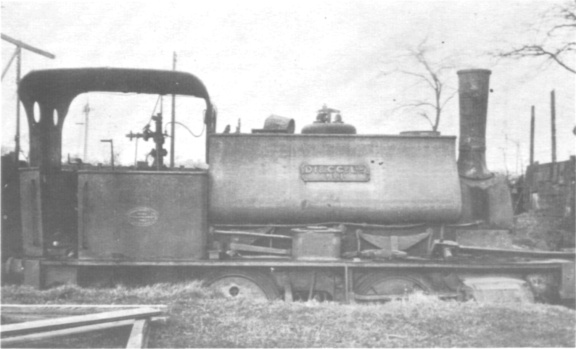
| THE INDUSTRIAL RAILWAY RECORD |
© SEPTEMBER 1966 |
A MEMORY OF DENBY COLLIERY
H. C. CASSERLEY
My first acquaintance with industrial locomotives was in Derbyshire during and just after the First World War, where I spent most of my holidays as a young boy with the many relations, stemming from my mother‘s side, in the area. One of these was an uncle in the colliery business, who finished up as general manager of the then independent Denby Colliery, near Ripley. With my two cousins, a boy and a girl of about the same age, we naturally had more or less free run of the colliery and had many footplate trips on the locomotive which conveyed the coal traffic on the colliery‘s half-mile branch line down to the Derby - Ripley branch of the Midland Railway. This branch at that time enjoyed a thriving traffic, both passenger and freight, but is now for the most part closed entirely. At the junction with the M.R. was situated the associated ironworks, but as this did not come under my uncle‘s jurisdiction we were not allowed on the premises.

The engine which normally worked the colliery branch was an 0−4−0 saddle tank built by the Yorkshire Engine Company in 1895, works No. 484 For some reason it was known by the delightful name of "Juddy Rust", although officially it was D I & C CO. LTD. No.1. It worked for the last time during 1919, and the accompanying photograph shows it standing in a siding on 31st December of that year awaiting scrap, which fate overtook it some time later. It was of course of special interest to me in that it was the first engine I ever rode on, and I believe on one or two occasions drove, and it was also the first industrial engine I ever photographed. (I had only had my first camera a fortnight or so when I took the picture).
At the time three other engines were owned by the Company - No.2 (Avonside 1500 of 1906), No.3 (Barclay 1324 of 1913) and No.4 (Avonside 1470 of 1905) - but these normally shunted in the ironworks and although I saw them I never gained their close acquaintance. After No.1 was scrapped presumably one of these took over its duties, even though they were somewhat heavier engines and the track of the colliery branch was very light. I cannot say for certain as I never again visited the colliery which closed with the ironworks in 1930.